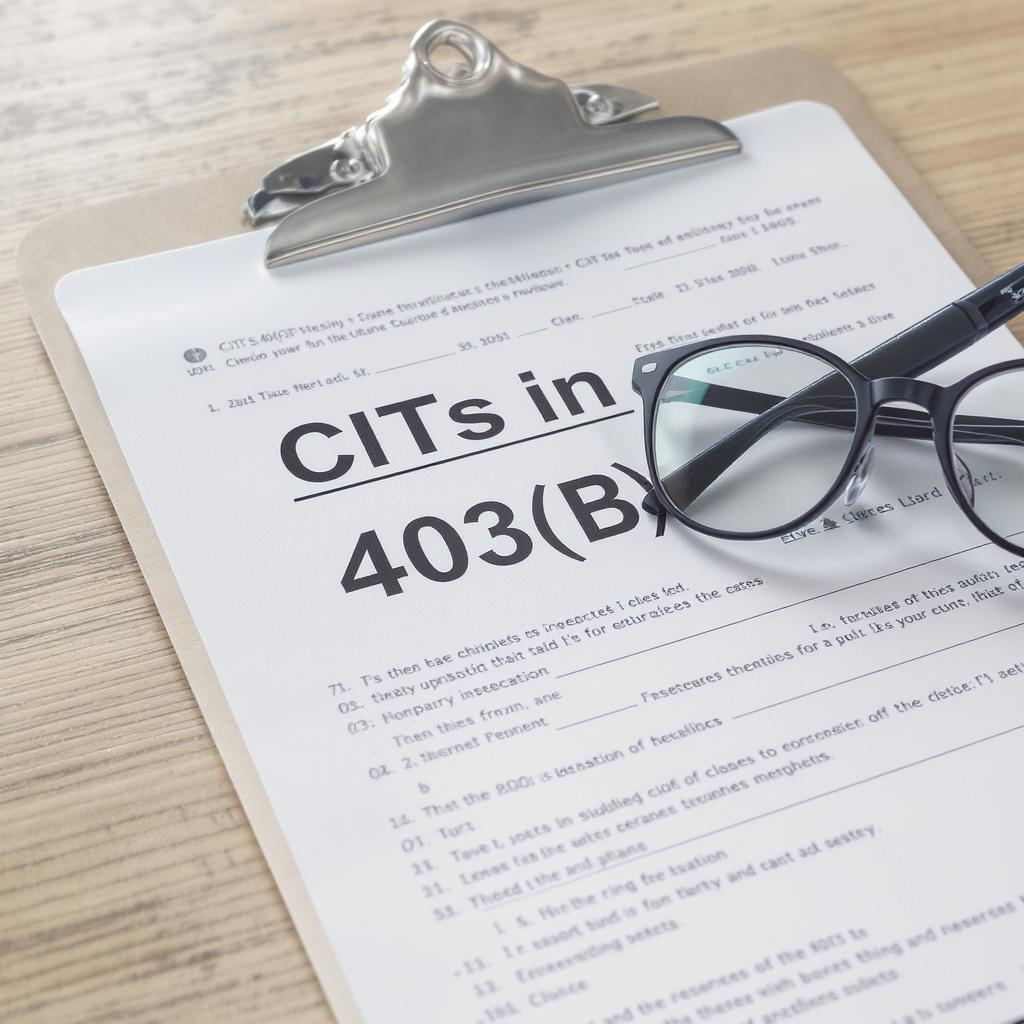Why This Matters: Leveling the Playing Field for Millions
For too long, 403(b) participants have been limited to investment options like mutual funds and annuities, which often come with higher fees and less flexibility. Meanwhile, 401(k) plans have widely adopted CITs, benefiting from their lower costs and institutional management.
H.R. 1013 aims to correct this imbalance. By amending federal securities law, it would grant 403(b) plans access to the same cost-efficient investment vehicles already available to other employer-sponsored plans. The impact? Reduced participant fees and a broader array of investment choices.
As Brian Graff, CEO of the American Retirement Association, puts it: "Under the bill, 15 million workers at these organizations throughout the country will now have access in their retirement plan—called a 403(b) plan—to the same lower-cost investments that are available to 401(k) plan participants.” This legislation is about fairness and ensuring that those who dedicate their careers to public service and non-profit work have the same opportunities for a secure retirement.
Understanding the Excitement: What Exactly Are CITs?
So, what are these Collective Investment Trusts that are causing such a stir? Simply put, CITs are pooled investment vehicles, much like mutual funds, but with a few key differences that make them particularly attractive for institutional investors:
- Lower Fees: CITs are regulated by the Office of the Comptroller of the Currency (OCC) and are exempt from SEC registration requirements, which significantly reduces their administrative, marketing, and distribution costs. These savings can then be passed on to plan participants.
- Greater Flexibility: Unlike mutual funds, CITs can offer more customized fee structures and investment strategies, allowing plan sponsors to tailor options more precisely to their participants' needs.
- Institutional Focus: CITs are designed exclusively for qualified retirement plans, leading to a focus on long-term investing and less susceptibility to volatile retail investor behavior. They are also tax-exempt, allowing for greater investment efficiency.
CITs have already become a dominant force in 401(k) menus, especially for popular target-date and index strategies, thanks to these advantages.
Fiduciary Implications: New Opportunities, New Responsibilities
For 403(b) plan fiduciaries, the potential arrival of CITs presents both exciting opportunities and crucial new responsibilities. This isn't a passive change; it demands proactive engagement:
- Heightened Due Diligence: While offering cost benefits, CITs operate under a different regulatory framework than mutual funds. Fiduciaries must implement robust due diligence processes for selecting and continually monitoring CITs, ensuring they align with the plan's investment policy and participant best interests.
- Clear Participant Communication: Transparency is key. Fiduciaries will need to clearly communicate the differences between CITs and mutual funds to participants, explaining fee structures, liquidity considerations, and the unique characteristics of these new investment options.
- Enhanced Plan Design: The introduction of CITs offers greater flexibility in plan design. Fiduciaries can leverage this to negotiate better pricing with providers and create more tailored investment menus that directly address the specific demographics and needs of their participant base.
Addressing the Concerns: A Path Forward
Some concerns have been raised regarding the expansion of CIT access to non-ERISA 403(b) plans, which may not have the same fiduciary protections as ERISA-covered plans. However, the legislative language aims to clarify that the inclusion of CITs does not automatically impose ERISA standards on these non-ERISA plans. Furthermore, proponents argue that the bill includes provisions that require a fiduciary to oversee the plan, whether it's an ERISA fiduciary, a state/local government entity, or the employer itself. The goal is to provide access while ensuring appropriate oversight.
What Should Fiduciaries Do Now? Your Action Plan
This legislative movement isn't a distant whisper; it's a growing chorus. Smart 403(b) fiduciaries will begin preparing now:
- Stay Informed: Actively track the progress of H.R. 1013 and any companion Senate legislation. This change could become law sooner than you think.
- Review Your Investment Policy: Begin the process of updating your Investment Policy Statement (IPS) and due diligence procedures. These documents will need to clearly address the selection, monitoring, and ongoing oversight of CITs.
- Educate Your Committee: Ensure your entire plan committee thoroughly understands the regulatory, operational, and participant communication implications that come with the introduction of CITs.
- Engage Your Providers: Start conversations with your recordkeeper and investment consultants. Discuss their capabilities and offerings regarding CITs, and assess their suitability for your participant base.
The Bottom Line: Seize the Opportunity, Fulfill Your Duty
The push to allow CITs in 403(b) plans represents a monumental step toward achieving true investment parity for nonprofit and public sector retirement savers. The promise of lower costs and broader investment menus is real and can significantly enhance participant outcomes. However, this flexibility comes hand-in-hand with new fiduciary responsibilities.
For 403(b) plan fiduciaries, the time to act is now. By proactively preparing for these changes, you can get ahead of the curve, ensure a smooth transition, and ultimately deliver the best possible retirement outcomes for those who serve our communities. Don't just watch the revolution happen—be an active participant in shaping a better financial future.
For more information and personalized guidance, please feel free to reach out to Vistamark Investments LLC. You can contact us at
312-895-3001, visit our website at
www.vistamarkllc.com, or send us an email to
info@vistamarkllc.com.
